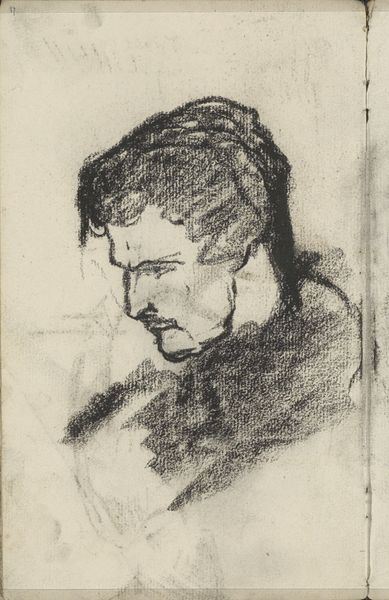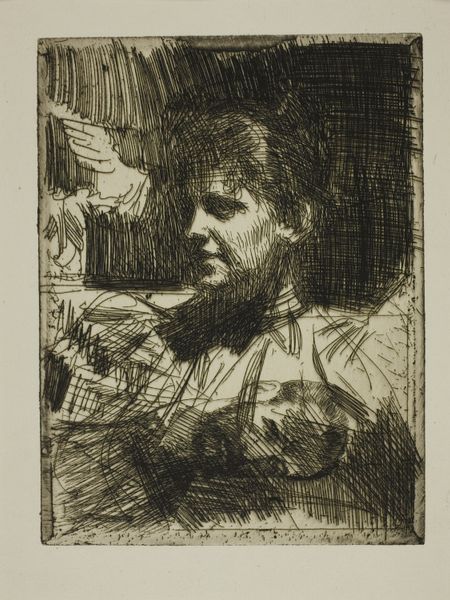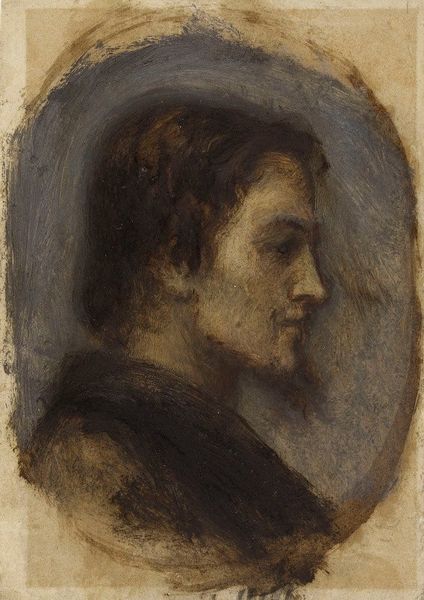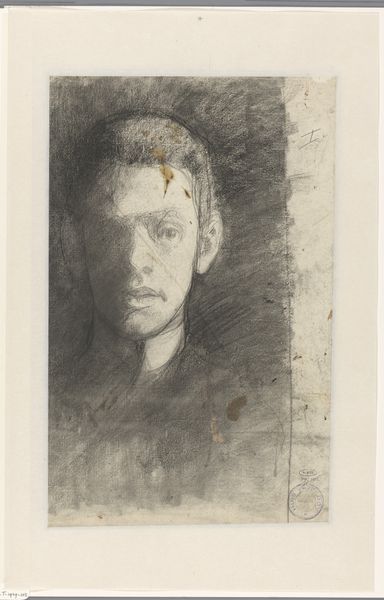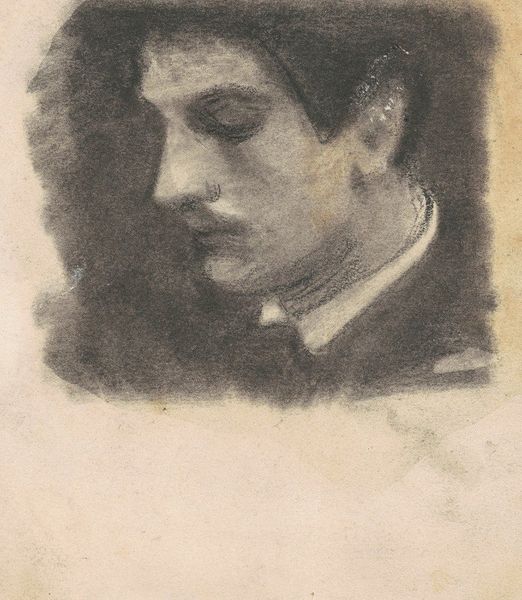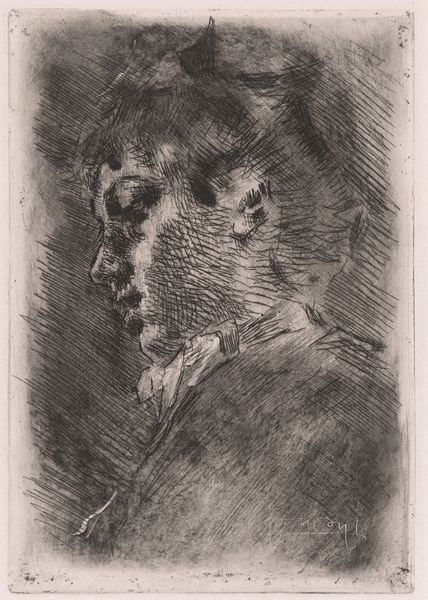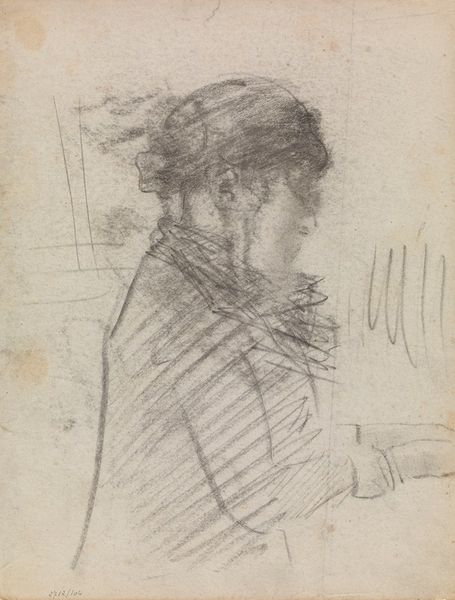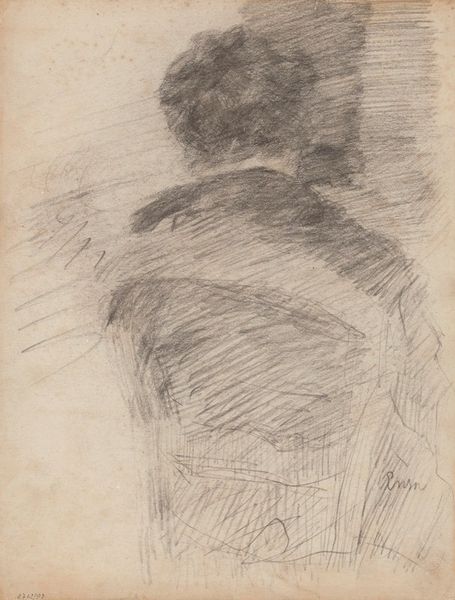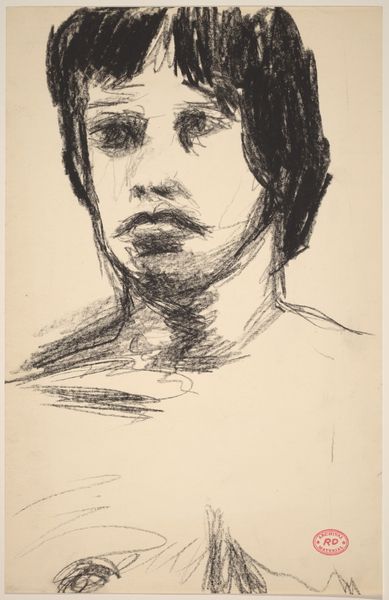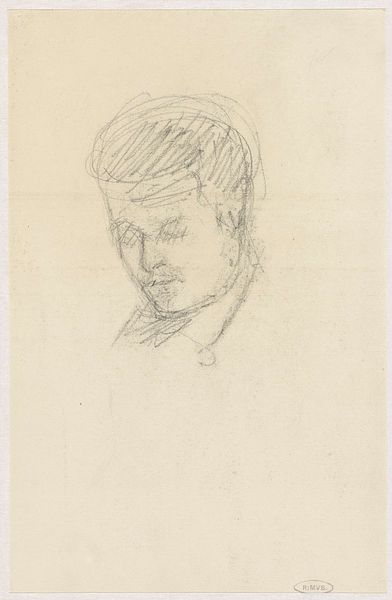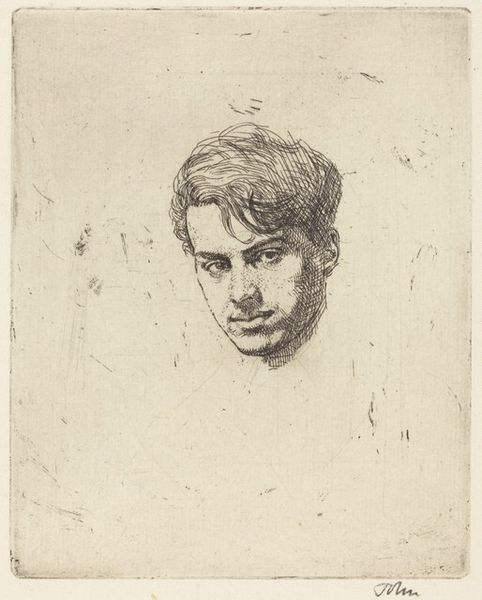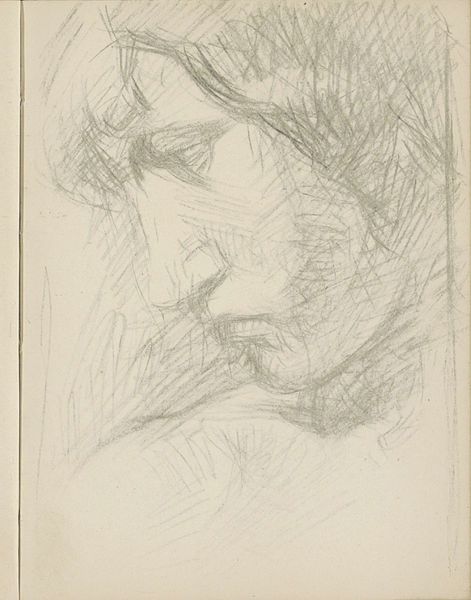
Dimensions: 365 × 312 mm (primary support); 455 × 430 mm (secondary support); 503 × 430 mm (tertiary support)
Copyright: Public Domain
Curator: Here we have Henri Fantin-Latour's "Self-Portrait," rendered in 1857. He employed charcoal, chalk, and pencil on paper to give us this glimpse into his young self. Editor: Immediately striking! The high contrast between light and shadow almost bisects his face. It evokes a certain pensiveness, maybe even a hint of melancholy? Curator: Precisely! Notice how the dramatic lighting emphasizes his gaze. Fantin-Latour masterfully uses the stark contrast to draw the viewer's eye directly to his face, highlighting the intensity and introspective nature of his self-assessment. The soft blending of chalk softens the impact of the drawing, imbuing a certain tenderness. Editor: The loose, almost frenetic hatching that surrounds his head and body acts almost like a halo of thought—as though you’re catching him mid-reflection. But let’s talk about the materiality. Can we ignore the clear importance of the surface—how its rough, unrefined condition creates a striking contrast? It serves as a poignant reminder of the artwork’s physical existence, enhancing its aesthetic value and conceptual meaning. Curator: A perfect way to put it! Beyond the formal elements, this drawing is, after all, deeply personal. There is a feeling that this portrait offers a private moment— a soul laid bare through his craft, which resonates. The roughness only enhances that intimacy. The choice of materials suggests the artist was less interested in polished realism, leaning instead toward Romanticism. Editor: True. Fantin-Latour really seemed interested in emotional truth above all else. That use of chiaroscuro becomes a symbolic representation of inner conflict. It’s so striking for being seemingly spontaneous. Curator: What's amazing to me is how a piece seemingly raw and quick becomes such a rich insight. It embodies so much, with what appears like so little effort. Editor: Absolutely, it captures something very fundamental about seeing. A compelling work.
Comments
No comments
Be the first to comment and join the conversation on the ultimate creative platform.
